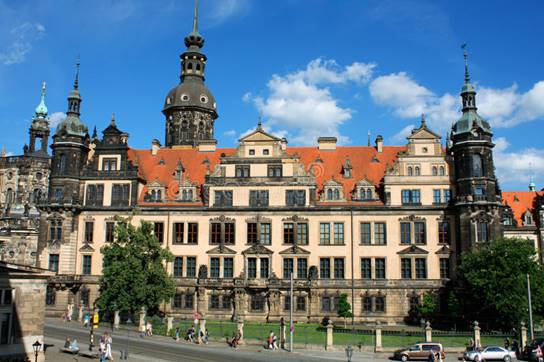Berlin
April 7 – April 12, 2019
Sunday, April 7
Arrival
Hotel Bristol


Great Italian Dinner
near hotel


+++++++++++++++++++++++++++++++++++++++++++++
Monday, April 8
City Tour
Starts with visit to Reichstag
The building in which the main German legislature met from 1894
until it was badly damaged by fire on the Nazi accession to power in 1933.
After German reunification the building was renovated and in 1999 it became the
meeting place of the German parliament.
(image from booklet)




Checkpoint
Charlie and Berlin Wall
Checkpoint
Charlie was the name given by the Western Allies to the best-known Berlin Wall
crossing point between East Berlin and West Berlin during the Cold War. East
German leader Walter Ulbricht agitated and maneuvered to get the Soviet Union's
permission to construct the Berlin Wall in 1961 to stop Eastern Bloc emigration
and defection westward through the Soviet border system, preventing escape
across the city sector border from communist East Berlin into West Berlin.
Checkpoint Charlie became a symbol of the Cold War.

East Side Gallery
The
East Side Gallery is understood as a monument to the fall of the Berlin Wall
and the peaceful negotiation of borders and conventions between societies and
people". It has more than three million visitors per year.
(images below from web source)


+++++++++++++++++++++++++++++++++++++++++++++++++++++
Tuesday, April 9
Half-day
trip to Potsdam
Potsdam is the
capital and largest city of the German federal state of Brandenburg. It
directly borders the German capital, Berlin, and is part of the
Berlin/Brandenburg Metropolitan Region.
Crossing
the Glieniche Bridge (Bridge of Spies)
On three days of its history of over three
hundred years Glienicke Bridge was the scene of
exchanges of secret agents. It was one of the few places in the world where the
United States and the Soviet Union stood directly opposite each other. And so
“deals” could be made here without any of their allies having any say in the
matter. The first time this happened was on the 10th February 1962,
when the American pilot Francis Gary Powers and the KGB spy Rudolf Ivanevich Abel were exchanged. Bridge of Spies was the title of a recent
feature film starring Tom Hanks.

Schloss Sanssouci
Sanssouci
was the summer palace of Frederick the Great, King of Prussia, in Potsdam, near
Berlin. It is often counted among the German rivals of Versailles. While Sanssouci is in the more intimate Rococo style and is far
smaller than its French Baroque counterpart, it too is notable for the numerous
temples and follies in the park.
(images below from post card and web source)



++++++++++++++++++++++++++++++++++++++++++++++++++++++++++++++++++++++++++++++++
Afternoon visit to
Kaiser-Wilhelm-Gedachtnis-Kirche
The original church on the
site was built in the 1890s. It was badly damaged in a bombing raid in 1943.
The present building, which consists of a church with an attached foyer and a
separate belfry with an attached chapel, was built between 1959 and 1963. The
damaged spire of the old church has been retained and its ground floor has been
made into a memorial hall.
The Memorial
Church today is a famous landmark of western Berlin, and
is nicknamed by Berliners "der hohle
Zahn", meaning "the hollow tooth".
(images below from post card and handout)


Organ loft and alter
images from Dianne


+++++++++++++++++++++++++++++++++++++++++++++++
Wednesday, April 10
Palace of Tears
(all images from web sources)
The
Tränenpalast is a former border crossing point
between East and West Berlin, at Berlin Friedrichstraße
station, which was in operation between 1962 and 1989. It is now a museum with
exhibitions about Berlin during the Cold War period and about the process of
German reunification. It was the border crossing for travelers on the S-bahn, U-bahn and trains going
between East and West Germany. It was used only for westbound border crossings.
It had separate checkpoints for West Berliners, West Germans, foreigners,
diplomats, transit travelers and East Germans.



+++++++++++++++++++++++++++++++++++++++++++++++++++++++++++++++++++++
Spree River Cruise
(all images from web sources)






+++++++++++++++++++++++++++++++++++++++++++++++
Thursday, April 11
Full-day
Trip to Dresden
Dresden
is the capital city and, after Leipzig, the second-largest city of the Free
State of Saxony in Germany. It is situated in a valley on the River Elbe, near
the border with the Czech Republic.
From February 13 to February 15, 1945,
during the final months of World War II (1939-45), Allied forces bombed the
historic city of Dresden, located in eastern Germany. The bombing was
controversial because Dresden was neither important to German wartime
production nor a major industrial center, and before the massive air raid of
February 1945 it had not suffered a major Allied attack. By February 15, the
city was a smoldering ruin and an unknown number of civilians—estimated at
somewhere between 35,000 and 135,000–were dead.
(all images from web sources)

The
Dresden Frauenkirche is a Lutheran church in Dresden,
the capital of the German state of Saxony. An earlier church building was
Catholic until it became Protestant during the Reformation. It was completely destroyed
in WWII. Allowed to be in ruins by East German Government. Now fully restored
after unification.


+++++++++++++++++++++++++++++++++++++
Dresden Opera
House
Bruhl”s Terrace
Dresden Royal
Palace Procession
of Princes


Procession
of Princes depicts a parade of Saxon rulers of the House of Wettin
since 1127. Mosaic composed of tiles.
++++++++++++++++++++++++++++++++++++++++++++++++++++
Friday, April 12
Berlin TV
Tower
The
Fernsehturm is a television tower in central Berlin,
Germany. Close to Alexanderplatz in Berlin-Mitte, the
tower was constructed between 1965–69 by the government of the German
Democratic Republic. It was intended to be both a symbol of Communist power and
of Berlin. It remains the latter today, as it is easily visible throughout the
central and some suburban districts of Berlin. With its height of 368 metres it is the tallest structure in Germany, and the
third-tallest structure in the European Union.
(all images from web sources)




++++++++++++++++++++++++++++++++++++++++++++++++++++
The
Berlinsche Galerie is one of the newest museums in
the German capital and collects art from Berlin dating from 1870 to the present
day - with both a local and international focus.


++++++++++++++++++++++++++++++++++++++++++++++++++++++++++++++++++++++++++++++++++++++++++++++
THE END
Additional
Travel Photos at http://www.retkuprof.com/TravelPhotos.html

